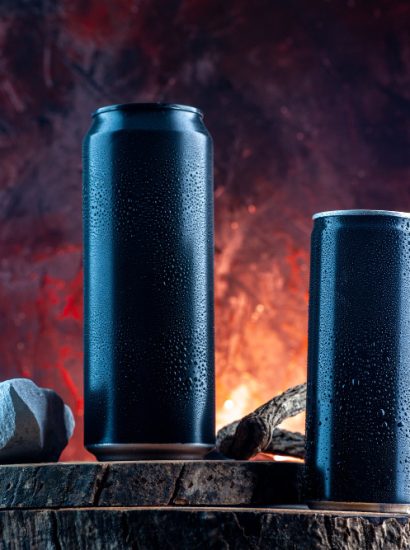In today’s world, where environmental sustainability is paramount, finding ways to reduce energy consumption while maintaining comfort is a top priority for many homeowners. One of the most effective ways to achieve this balance is through the adoption of eco-friendly heating solutions, commonly referred to as “eco heat.” In this comprehensive guide, we’ll delve into Eco Heat 101, exploring five powerful strategies to slash energy bills while minimizing your carbon footprint.
Understanding Eco Heat
Eco heat encompasses a range of sustainable heating technologies and practices designed to minimize environmental impact while maximizing energy efficiency. By harnessing renewable energy sources such as solar, geothermal, biomass, and air-to-water heat pumps, eco-heat systems offer a greener alternative to traditional heating methods.
Harnessing Solar Power
Solar energy is abundant, renewable, and readily available, making it an ideal source for eco-friendly heating. Solar thermal systems utilize sunlight to heat water or air, which can then be circulated through radiant floor heating or conventional heating systems. By harnessing the power of the sun, homeowners can significantly reduce their reliance on fossil fuels and lower their energy bills.
Tapping into Geothermal Energy
Geothermal heat pumps utilize the stable temperature of the earth’s subsurface to provide heating and cooling for residential and commercial buildings. By circulating fluid through underground pipes, these systems extract heat from the ground during winter months and transfer it indoors, providing efficient and consistent heating throughout the year. With minimal environmental impact and long-term cost savings, geothermal energy represents a powerful eco heat solution.
Embracing Biomass Heating
Biomass heating systems utilize organic materials such as wood pellets, agricultural residues, or dedicated energy crops to generate heat. By burning these renewable fuels in high-efficiency boilers or stoves, biomass heating provides a sustainable alternative to fossil fuels while reducing greenhouse gas emissions. Whether used for space heating, water heating, or even power generation, biomass offers a versatile and eco-friendly heating solution.
Exploring Air-to-Water Heat Pumps
Air-to-water heat pumps extract heat from the ambient air and transfer it to a water-based heating system, such as underfloor heating or radiators. By utilizing refrigerant compression cycles, these systems can achieve high levels of efficiency even in cold climates, making them suitable for residential heating applications. With lower operating costs and reduced carbon emissions compared to traditional heating methods, air-to-water heat pumps offer a compelling eco heat solution for homeowners.
Eco Heat in Action: Case Studies
To illustrate the real-world impact of eco-heat solutions, let’s explore several case studies highlighting successful implementations of sustainable heating technologies. From residential homes to commercial buildings, these examples demonstrate the effectiveness of eco-heat in reducing energy bills and carbon footprints while enhancing comfort and sustainability.
Eco Heat Retrofitting: Upgrading Existing Systems
For homeowners looking to transition to eco-friendly heating without undertaking major renovations, retrofitting existing systems presents a viable option. By upgrading boilers, adding solar panels, or installing heat pumps, existing homes can be transformed into energy-efficient and environmentally friendly spaces. With careful planning and investment, eco heat retrofitting offers a cost-effective way to slash energy bills and embrace sustainability.
Eco Heat Best Practices: Tips for Optimal Efficiency
To maximize the effectiveness of eco-heat systems, it’s essential to follow best practices for optimal efficiency. From regular maintenance and proper insulation to smart thermostat usage and passive solar design, adopting eco-heat best practices can further reduce energy consumption and enhance comfort. By incorporating these strategies into your heating routine, you can enjoy significant savings while minimizing environmental impact.
Overcoming Challenges: Addressing Common Concerns
While eco heat solutions offer numerous benefits, they may also present challenges such as higher upfront costs, technological complexity, and compatibility issues. However, with proper planning, education, and support from qualified professionals, these challenges can be overcome. By addressing common concerns and implementing proven strategies, homeowners can successfully transition to eco-friendly heating and reap the rewards for years to come.
Innovations and Opportunities
As technology continues to evolve and environmental awareness grows, the future of eco heat looks brighter than ever. From advancements in renewable energy storage and distribution to the integration of smart grid technologies and artificial intelligence, the possibilities for eco-friendly heating are endless. By staying informed and embracing innovation, homeowners can lead the way towards a more sustainable and resilient future.
Conclusion
In conclusion, Eco Heat 101 provides homeowners with valuable insights and actionable strategies for slashing energy bills while reducing environmental impact. By harnessing the power of solar, geothermal, biomass, and air-to-water heat pumps, eco-heat systems offer a greener alternative to traditional heating methods. Through case studies, best practices, and forward-looking innovations, homeowners can embrace eco-friendly heating solutions and pave the way towards a more sustainable future.
FAQs
Q1. What are the key advantages of sustainable heating solutions?
Sustainable heating solutions offer benefits such as reduced energy consumption, lower utility bills, decreased reliance on fossil fuels, and minimized environmental impact.
Q2. How do renewable energy sources contribute to heating efficiency?
Renewable energy sources like solar, geothermal, biomass, and air-to-water heat pumps provide abundant and clean energy for heating, offering efficient alternatives to traditional fossil fuel-based systems.
Q3. Are there any government incentives available for adopting sustainable heating technologies?
Many governments offer incentives, tax credits, and rebates to encourage the adoption of sustainable heating technologies, helping homeowners offset the initial costs and accelerate the transition to greener energy solutions.
Q4. What factors should I consider when choosing a sustainable heating system for my home?
When selecting a sustainable heating system, it’s essential to consider factors such as your location, property size, heating requirements, budget, available incentives, and compatibility with existing infrastructure.
Q5. How can I ensure the optimal performance and longevity of my sustainable heating system?
To maintain the optimal performance and longevity of your sustainable heating system, it’s important to schedule regular maintenance, follow manufacturer recommendations, monitor energy usage, and address any issues promptly with professional assistance.
Also read: FAIZAH KHANUM MUSTAFA KHAN RULEBOOK: 5 BEST EMPOWERING POWER MOVES FOR WOMEN IN BUSINESS









